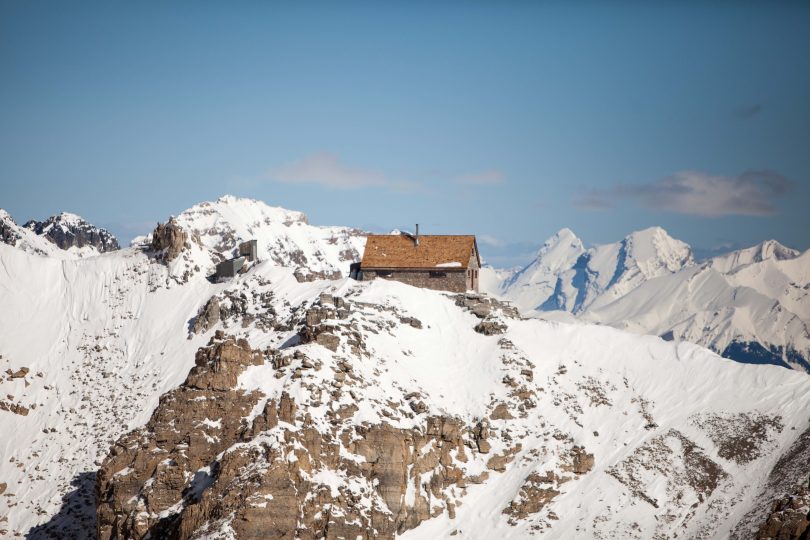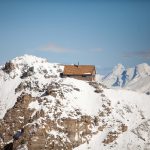Forget Airbnb — these Rocky Mountain accommodations have no Wi-Fi, no soaker tubs, and no parking spaces, instead offering jaw-dropping views, fresh air and a deep sense of accomplishment. The Alpine Club of Canada operates a network of more than a dozen huts in the Alberta and B.C. Rockies. Each is unique, many are open year-round, and all are accessed using 100-percent human power: hiking, skiing, mountain biking, or even climbing and glacier-traversing.
Sound like your kind of thing? Here are 6 ways to make your first trip to an Alpine Hut go smoothly.
1. Book your bunk and get your permits.
Save your spot by phoning the Alpine Club of Canada at 403-678-3200 (ext. 0) or going in person to the ACC Clubhouse in Canmore. You can ask questions by email, but the booking process is strictly offline. If you’re staying a National Park, you’ll need to purchase a Backcountry Wilderness Pass; you can get an annual pass or an overnight pass along with your reservation. You don’t have to be a member of the Alpine Club of Canada to stay in a hut, but it’ll save you about $10 a night.
2. Pack smart.
You don’t want to carry more than you need, but you also don’t want to be hungry or cold. Calculate your calories, invest in some lightweight gear (down is better than wool; dehydrated meals are better than cans of soup, a pillowcase that can be stuffed with a jacket is better than a pillow, etc.) and do a few practice walks with a fully loaded pack. No matter how fit and prepared you are, you’ll still get passed on the switchbacks by ropey climbers with backpacks the size of cars. That’s just part of the fun.
3. Take inside shoes, lights, and earplugs.
There are few better places to make new friends than in backcountry huts, but it helps if you’re prepared to be in close quarters with others. Take hut shoes or flip flops for indoors and leave your muddy shoes and stinky socks in the designated area. Sleeping is dorm-style, so make sure you have earplugs (a sleeping mask is a good idea too). Carry a headlamp or flashlight so you can find the outhouse in the dark or keep your footing when you go out to look at the stars.
4. Tote your trash.
Some huts have a resident custodian but their job is maintenance, not maid service. Be prepared to take everything you brought — from stray noodles and food packaging to used Kleenex — away from the hut when you leave. This helps keep these pristine areas pristine and prevents huts from attracting hungry rodents.
5. Purify your water.
None of the huts is anywhere near a water filtration plant, so none can guarantee its water is entirely safe for drinking. Unless you want to spend your hut time literally watching a pot boil, pack a filter or some water purification tablets.
6. Consider the crowd.
Some huts are primarily used as jumping-off points for climbers. Some are described as family-friendly, which means they’re more accessible and more likely to have a little stash of board games. One of the great pleasures of the Alpine Hut experience is chatting with strangers (the location is an instant icebreaker), but it’s not for everyone. If you’d rather be with people you know, gather a group, pick a small hut, and book the whole thing.
By Julia Williams; featured photo is of the Abbott Hut; photo credit: Banff & Lake Louise Tourism / Paul Zizka Photography








